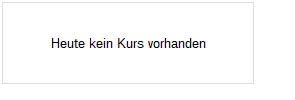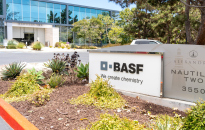
Bunge Reports Second Quarter 2017 Results
PR Newswire
WHITE PLAINS, N.Y., Aug. 2, 2017
WHITE PLAINS, N.Y., Aug. 2, 2017 /PRNewswire/ -- Bunge Limited (NYSE: BG)
- Q2 GAAP EPS of $0.48 vs. $0.81 last year; $0.17 vs. $0.79 on an adjusted basis
- Agribusiness impacted by weak margins and slow farmer selling in South America
- Food & Ingredients results as expected, driven by improved Edible Oils
- Sugar & Bioenergy benefitted from higher hedged sugar prices
- Combined Agri-Foods trailing four quarter ROIC of 6.1%; 0.9 points below WACC
- Announced $250 million Competitiveness Program
- Expect significant improvement in the second half of the year
„ Financial Highlights
| | Quarter Ended | Six Months Ended | ||||
| US$ in millions, except per share | 6/30/17 | 6/30/16 | 6/30/17 | 6/30/16 | ||
| Net income attributable to Bunge | $81 | $121 | $128 | $356 | ||
| | | | | | ||
| Net income (loss) per common share from | $0.48 | $0.81 | $0.79 | $2.43 | ||
| | | | | | ||
| Net income (loss) per common share from | $0.17 | $0.79 | $0.52 | $2.23 | ||
| Total Segment EBIT (a) | $73 | $205 | $206 | $527 | ||
| Certain gains & (charges) (b) | $(6) | $(12) | $(12) | $(12) | ||
| Total Segment EBIT, adjusted (a) | $79 | $217 | $218 | $539 | ||
| Agribusiness (c) | $18 | $180 | $127 | $462 | ||
| Oilseeds | $2 | $56 | $94 | $194 | ||
| Grains | $16 | $124 | $33 | $268 | ||
| Food & Ingredients (d) | $44 | $35 | $89 | $87 | ||
| Sugar & Bioenergy | $14 | $- | $3 | $(14) | ||
| Fertilizer | $3 | $2 | $(1) | $4 | ||
| | | | | | ||
| (a) | Total Segment earnings before interest and tax ("Total Segment EBIT"); Total Segment EBIT, adjusted; net income (loss) per common share from continuing operations-diluted, adjusted funds from operations and ROIC are non-GAAP financial measures. Reconciliations to the most directly comparable U.S. GAAP measures are included in the tables attached to this press release and the accompanying slide presentation posted on Bunge's website. |
| (b) | Certain gains & (charges) included in Total Segment EBIT. See Additional Financial Information for detail. |
| (c) | See footnote 8 of Additional Financial Information for a description of the Oilseeds and Grains businesses in Bunge's Agribusiness segment. |
| (d) | Includes Edible Oil Products and Milling Products segments. |
„Overview
Soren Schroder, Bunge's Chief Executive Officer, stated, "Weak global margins and slower than expected farmer selling in South America led to a challenging second quarter in Agribusiness. Food & Ingredients results were as expected, driven by significantly improved results in Edible Oils. Sugar & Bioenergy benefitted from higher hedged sugar prices and improved operational efficiencies. The rolling four quarter ROIC for our core Agribusiness and Food operations was 6.1%, 0.9 points below our WACC, reflecting the tough market conditions,
"We are optimistic about a much better second half of the year, but some market headwinds will persist. Global trade remains strong, opportunities are emerging from recent weather concerns in North America and farmers in Brazil are proving willing sellers as prices have increased. While consumption of soy meal and oil is strong, the crushing industry oversupplied the market during the second quarter, resulting in a meal surplus that is expected to weigh on margins through the third quarter.
In Food & Ingredients, Edible Oils is on track and should significantly exceed last year's result. However, our Milling business, particularly in Brazil, is facing headwinds from contraction in flour consumption both in the industrial and food service segments. Sugar & Bioenergy should continue to benefit from strong operational performance and hedges, and will have a strong second half of the year.
"Recently, we announced a global Competitiveness Program to lower costs, increase efficiencies and reengineer the way we work. We expect this program to reduce overhead costs by $250 million by the end of 2019 with $100 million of savings expected in 2018. This is a transformational next step that will significantly boost our competitiveness as market conditions improve, and builds on our existing industrial productivity program, which has delivered $43 million of benefits year-to-date toward our full year estimate of $100 million."
Second Quarter Results
Agribusiness
Lower results in the quarter were primarily driven by slow farmer selling in South America that negatively impacted margins throughout the value chain. In Grains, Brazil was the primary driver of decreased results, due to the combination of farmer retention and intense industry competition for supply to meet logistics commitments. In grain trading & distribution, lower results reflected ample global grain supplies and a largely spot customer that limited forward merchandising opportunities. Higher volumes were primarily attributed to increased exports out of the U.S., which, despite being in its seasonally slow period, remained competitive with South America for much of the quarter.
In Oilseeds, soy processing results were down in all regions. In South America, lower margins were driven by a combination of slow farmer selling and an oversupply of soybean meal. In the U.S., results were lower than a particularly strong prior year that benefitted from harvest delays and production shortfalls in South America. In China, margins were impacted by industry overcapacity. Partially offsetting these lower results were higher softseed processing results in Canada, which compared favorably to a challenging prior year period where seed supply was tight. Results in oilseed trading & distribution were higher than last year, reflecting increased volumes, margins and contributions from risk management. Oilseed results in the quarter were impacted by $11 million of mark-to-market hedging losses, whereas, results in 2016 included approximately $40 million of mark-to-market hedging gains.
Edible Oil Products
Results improved in all regions compared to last year, with the largest increases in Europe and the U.S. Europe benefitted from an increase in margins and volumes, as well as contributions from new acquisitions, which enhanced our mix of higher value added products and expanded our customer base. In the U.S., reduced costs more than offset lower refining margins and volumes. In Brazil, slightly better results were driven by increased volume and margins; however, volumes of specialty oils and other higher margin products continued to be depressed due to challenging macro-economic conditions. In Asia, higher results were primarily due to growth in sales of higher margin products in India. Second quarter 2016 results included a reversal of an approximately $12 million mark-to-market gain.
Milling Products
The decline in segment performance was mainly driven by Brazil and Mexico. In Brazil, the region with the largest year-over-year variance, results were impacted by lower volumes and margins as consumers continued to trade down to lower value products and an overall decline in flour consumption in both the food service and food processor channels. Also impacting results in Brazil was aggressive pricing by small mills, which increased production in response to the larger than normal Brazilian wheat crop. In Mexico, results were impacted by a decrease in margins, delays in passing through higher raw material costs in local currency due to competitive pressures and unfavorable currency translation. However, results improved in Mexico from the first quarter, and we expect further improvement in both regions as we progress through the year. U.S. milling was steady with a promising outlook for the second half of the year.
Sugar & Bioenergy
Increased results in the quarter were primarily driven by our sugarcane milling operation, which benefitted from higher sugar volumes and production that was hedged at higher prices than last year. Despite prolonged periods of wet weather during the quarter, crushing volumes and ATR were higher than last year due to improved industrial and farming performance. Results in our biofuel joint ventures were higher, reflecting increased ethanol margins in Argentina. Results in the quarter were impacted by a $6 million loss from our renewable oils joint venture.
Fertilizer
Higher results in the quarter, were driven by slight improvements in Argentina and Brazil. Typically, the first and second quarters are seasonal low points for fertilizer volumes as a result of the South American agricultural growing cycle.
Cash Flow
Cash used for operations in the six months ended June 30, 2017 was $477 million compared to cash used of $684 million in the same period last year. The year-over-year variance primarily reflects positive changes in working capital offset in part by lower earnings.
Income Taxes
Excluding approximately $49 million of notable tax benefits, the effective tax rate for the six months ended June 30, 2017 was approximately 20%.
„Outlook
Thom Boehlert, Chief Financial Officer, stated, "Overall, we expect a much improved second half of the year. In Agribusiness, the third quarter is off to a good start. While South American soy crush margins have expanded, they, along with soy crush margins in Europe, are still below our earlier expectations. As a result, we are adjusting our full-year 2017 EBIT range to $550 million to $650 million, weighted to the fourth quarter.
"In Food & Ingredients, we expect Edible Oils to continue to show strong year-over-year improvement on higher volumes and margins. However, due to challenging first half conditions in Milling, and in anticipation of continued soft consumer demand in Brazil and Mexico, we are adjusting our full-year 2017 EBIT range to $210 million to $230 million, weighted to the fourth quarter.
"In Sugar & Bioenergy, we are entering the seasonally strong period of the year when ATR yields rapidly increase. Our sugarcane milling operations are trending well, and the segment remains on target to achieve full-year EBIT of $100 to $120 million assuming normal weather patterns. Results will be weighted toward the fourth quarter, reflecting seasonally tighter ethanol supply.
"In Fertilizer, we continue to expect 2017 segment EBIT to be approximately $25 million.
"We expect our full-year 2017 tax rate, excluding notables, to be 18% to 22%, which is more favorable than our previous expectation of 23% to 27%, primarily due to our forecasted earnings mix."
Mehr Nachrichten zur Bunge Aktie kostenlos abonnieren
(Mit der Bestellung akzeptierst du die Datenschutzhinweise)

Hinweis: ARIVA.DE veröffentlicht in dieser Rubrik Analysen, Kolumnen und Nachrichten aus verschiedenen Quellen. Die ARIVA.DE AG ist nicht verantwortlich für Inhalte, die erkennbar von Dritten in den „News“-Bereich dieser Webseite eingestellt worden sind, und macht sich diese nicht zu Eigen. Diese Inhalte sind insbesondere durch eine entsprechende „von“-Kennzeichnung unterhalb der Artikelüberschrift und/oder durch den Link „Um den vollständigen Artikel zu lesen, klicken Sie bitte hier.“ erkennbar; verantwortlich für diese Inhalte ist allein der genannte Dritte.




